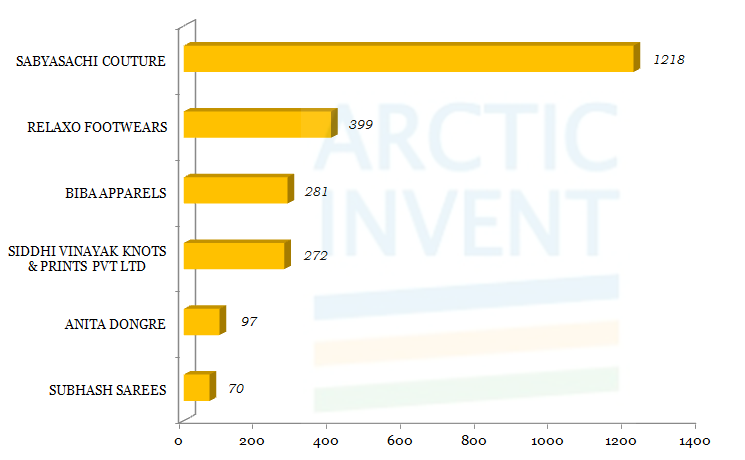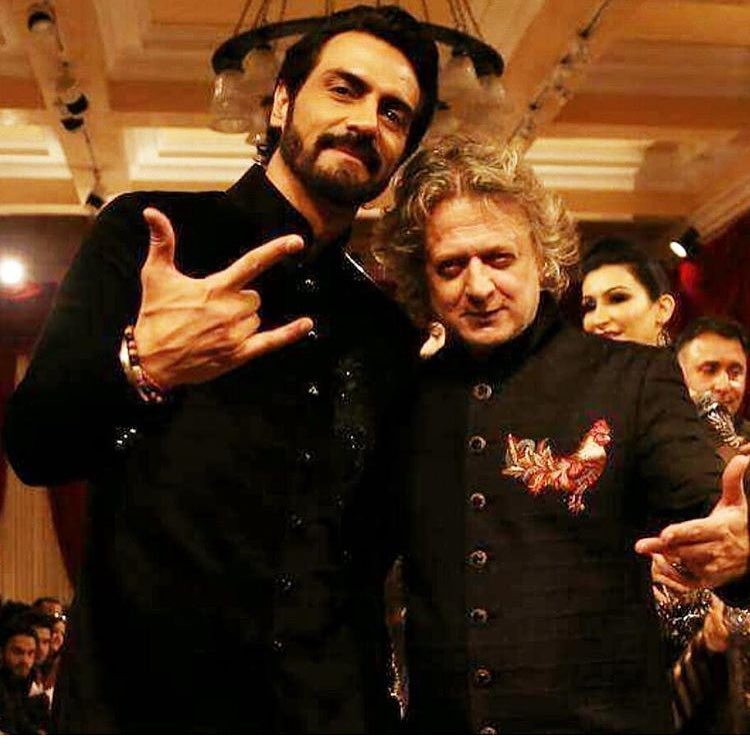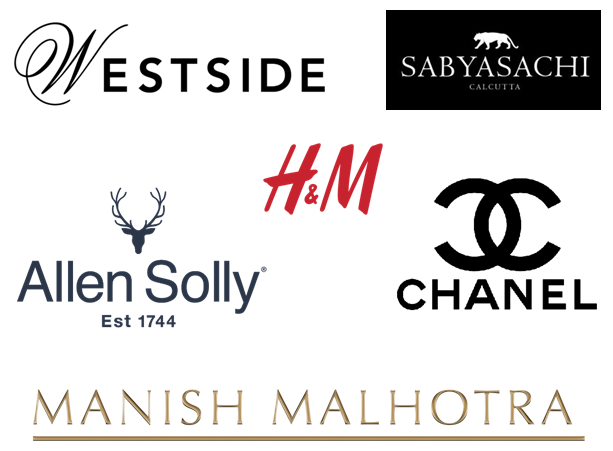The fashion industry is where the creativity of humans thrives. Every day, in almost every sphere of life, we come across dozens of designs in the fashion industry. No wonder the protective masks we wear today have also become a fashion statement. Dresses, shoes, bags, jewellery, accessories – everything we see in dazzling designs and shapes is part of the industry. And, this industry is dynamic – ever-changing. While some designs are timeless classics, some are in vogue but still unique. Your intellectual effort can go in vain if someone else copied and reaped its benefits.
“To wear dreams on one’s feet is to begin to give a reality to one’s dreams.”
—Roger Vivier
Creativity and uniqueness are what make a design stand apart. A large chunk of the fashion sales in India is still through the unorganized modes of retail. A McKinsey report states that formal retail will reach 45% by 2025, which remains low. With such a vast market as India, copy and piracy of designs has been a problem. So how can fashion designers protect their unique designs? To this end, we will discuss how you can use various intellectual property rights to protect your fashion designs in this article.
Use these intellectual property rights to protect your fashion designs
The work of a designer is the outcome of their intellect. Thus fashion designs are ideas in mind brought to life by sketches or in fabric. You have various forms of Intellectual Property (IP) rights at your disposal to protect fashion designs in either form. Let’s discuss each of these methods in the following sections:
Design registration
Design patents, also called industrial designs, are a form of intellectual property. In India, we know industrial designs as designs or registered designs. Designs protect features such as line, colour, shape, configuration, or a combination of either of these. Registration of a design will stop others from exploiting 2-D and 3-D features of your design. So you can protect a unique 2-D print on an item of clothing such as the ‘Kerala Kasavu’ saree’s gold-threaded borders. The coverage of line, pattern and colour features means that you can protect the embroidery in a cloth. Moreover, registered designs also cover 3-D elements of a design, such as a unique cut or new shape of a hat.

Some countries allow protection before registering to safeguard fashion designers’ interests. For instance, some European countries protect unregistered designs for up to three years. But in India, to qualify for protection, you need to register your design with the patent office. Design registration protects fashion designs for up to 15 years from the filing date. In India, it is also relatively cheap compared to the US or Europe to register a design. You can get a design registered in India from INR 6000/- to INR 10,000/-. The time taken to complete the registration procedure can be 3-6 months. Thus you must decide beforehand to register your design.
Some essential points to keep in mind before registering a clothing design
While most of the requirements for registering a design apply to clothing designs, there may be other things you need to keep in mind. To be eligible for design registration, it should be non-functional, unique and original. Non-functional features have only visual appeal and are not essential for the working of the article. Traditional articles of clothing, thus, will not receive design protection.
The clothing design must also meet the following criteria to qualify for design registration:
- The clothing design must be new and unique. You cannot register a clothing design that is already known to the public.
- The design must not affect the function of the apparel. For, e.g. you cannot register a design for a two-way zipper of clothing. It may, however, qualify for patent protection.
- The design must be on the surface of the article of clothing. You cannot detach the design from the piece of clothing.
Copyright
When you put your imagination into sketches or drawings of your designs, you can copyright them as artistic works. You get a copyright on sketches of the fashion work as soon as you create it. And, it will be valid for the life of the designer plus 60 years. Like designs, copyright law also protects original & unique though, creative works of art. Registering for copyrights is optional. However, you must register to enter the design in the Register of Copyrights (RoC).
When is a copyright valid over a registered design and when is it not?
As with the case of most designs, there is a hairline difference between the two. Copyrights will protect creative and artistic works. Designs will protect industrial designs, i.e., designs that you will use in large numbers. Further, there are some conditions on when copyrights hold:
- If a design capable of being registered is not registered, it will get copyright protection. In such cases, copyrights will hold until the 50th production of the clothing item made through an industrial process.
- Designs that are original works of art and are not produced on large scale will get copyright protection.
- A fashion design registered as a design will not get copyright protection. So the validity of the design will not be the life of the author plus 60 years. Instead, it will be valid for ten years and five more years upon extension.

Patent
Another form of intellectual property is utility patents for protecting inventions. There can be various aspects of a clothing design. But what if you came up with a new button style, a two-way zipper or the next Reebok pump? Such novel, useful and not obvious features are under the scope of patents. Designs cover non-functional features, while patents protect functional features.
The clothing industry, despite its aesthetic nature, can make use of novel features. For example, a new odorless material, or antibacterial materials, etc. are novel technical features. They offer solutions to technical problems. The core requirement remains that the idea should be new, non-obvious and be capable of industrial use. Then, patents will protect your invention for 20 years from the application date.
Trademark
The fashion industry makes immense use of another aspect of clothing designs. This aspect is the brand image. Be it the striking red elements in any Christian Louboutin designs or the logos of various fashion houses in India. They all use a symbol, colour or phrase to distinguish their products from others. Trademarks or trade dresses help customers perceive a design by the distinct features of a particular brand. So if you have a new logo, motto or design element that will remain constant in all your creations, consider registering a trademark.
You can use the symbol ™ for an intent to trademark on your designs or website images. Once registered, you can use the symbol Ⓡ to denote a registered trademark. It will deter others from copying the customer perception related aspects of your designs. Trademarks are valid for ten years, and you can renew them for ten years consecutively.

Geographical Indications
Remember the last time a Kashmir Pashmina crossed your mind? Or the famous Banarasi saree? The Kancheepuram silk? These are some examples of fashion products specific to a region. Geographical indications (GI) are another form of intellectual property. GI protects products that have unique qualities due to its place of origin. Thus it helps preserve a trade passed on from generations particular to a region because of its unique qualities. For example, Assam’s famous golden yellow muga silk gets its colour because of the Antheraea silkworm found in Assam only.
There are over 65 handloom products, and six logos in India registered under the GI Act. So as a community, you can use GI to protect the textile and artistic features of fabric in the fashion industry. It helps protect the interests of a community, union or group of manufacturers of a region. GI will be valid for ten years from registration, and you can renew this IP right for another ten years before expiry.
Trade secrets or business models
It is no surprise that Coca-Cola and KFC have kept their recipes secret over the years. An often-overlooked form of IP is trade secrets. In the fashion industry, you can use trade secrets to protect a unique business model, the ingredients of a perfume, a method of manufacturing etc. Unlike other forms of IP, it is up to you to maintain the secrecy of valuable information as long as possible. Then, you can prove that you took reasonable measures to keep the information a secret in case of a breach or copying.
There is a misconception that trade secrets only help tech companies protect their software and business models. However, the fashion industry can make good use of covering other aspects of the business too. For example, ZARA uses a proprietary IT tool to deliver a new design in 30 days as per a WIPO publication. Some luxury brands keep their supplier and consumer lists a secret too. The most important aspect of a trade secret is the effort you take to keep the information a secret. Secrets could be employee agreements, facility confidentiality, NDAs etc. The gist is to portray your secrecy in the market. Or to exchange the trade secret for a valuable price.
Which is the best mode of protection of fashion designs?
Because of the size of the market and informal retail, fashion designs in India are always prone to piracy. Piracy is an illegal copy of your designs, either as knock off or counterfeit designs. When people use resembling designs and sell under their brand, they use knock-offs. Counterfeit means a direct copy of your design, logo and other features to deceive a customer. Under such circumstances, the intense effort to make something unique and creative can go in vain. Thus it is vital to be unique in this industry as we can see from the words of French fashion designer Coco Chanel:
“ In order to be irreplaceable one must always be different.”
– Coco Chanel
Famous designers Rohit Bal, Anju Modi and Anita Dongre, copyrighted their collections back in 2017. This move sparked interest in the fashion and IP fraternity. Since the fashion industry is ever-changing with dynamic trends, design protection is challenging. There are debates in cases on which aspects come under copyright and which under designs. But you, too, can take a multi-pronged approach to cover these aspects. The various forms of IP listed above cover different aspects in different ways. The key is to analyze the worth of protection against each type of intellectual property right.
